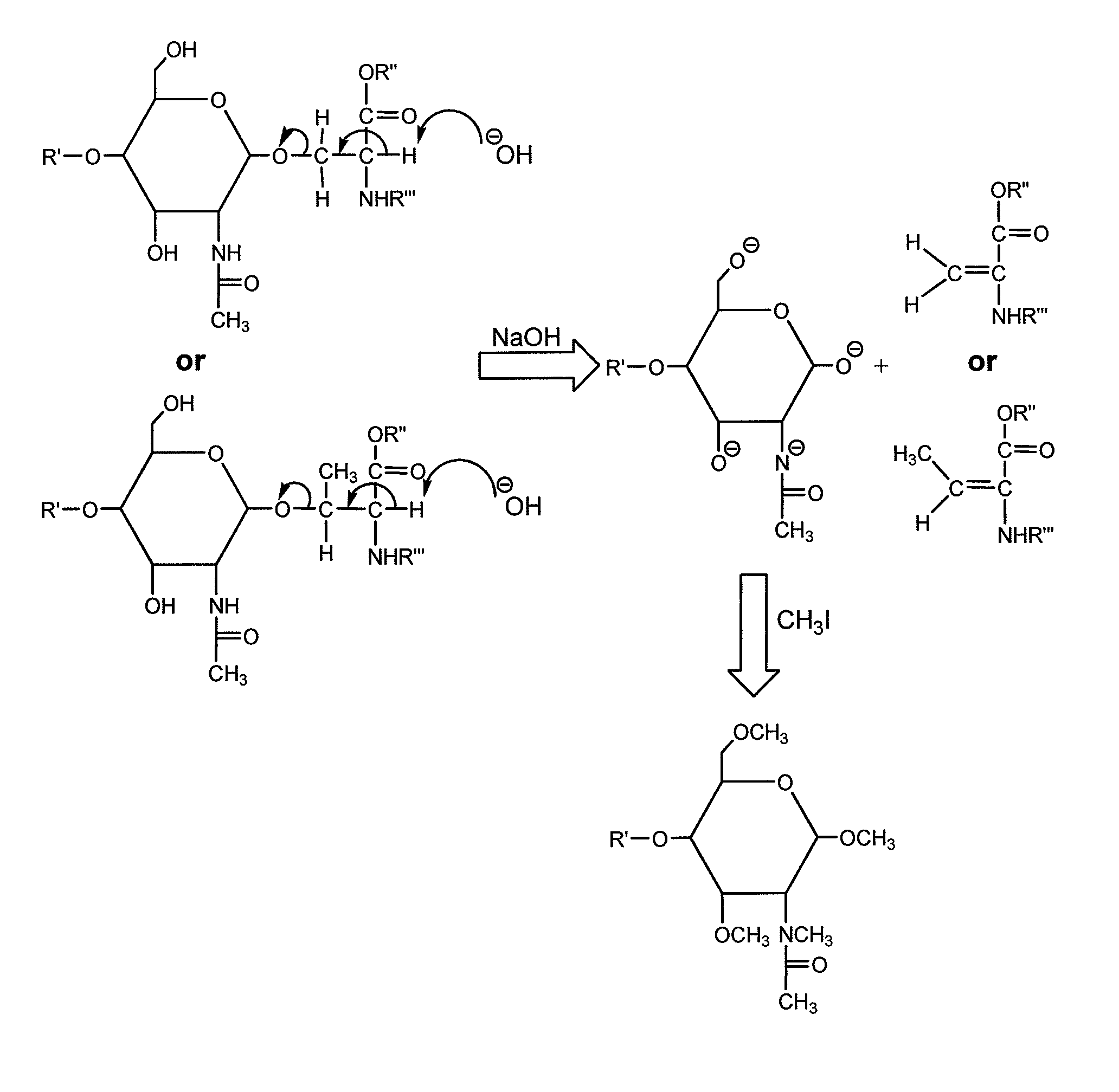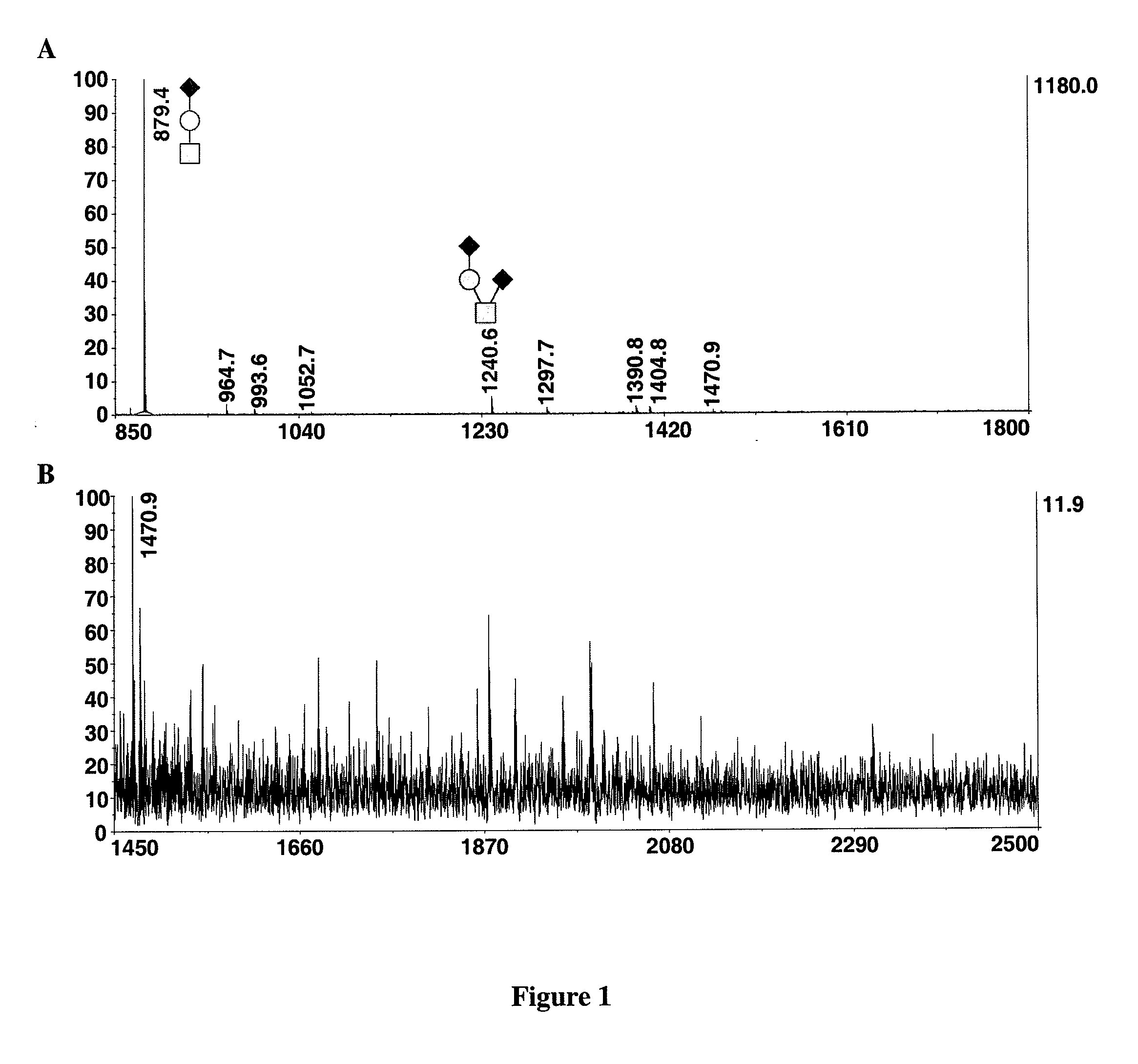Method for the analysis of o-linked oliosacharides
a technology of oligosacharides and oligosaccharides, applied in the field of analytical chemistry, can solve the problems of inability to achieve, limited sample preparation protocols, and associated ‘peeling reactions’ that occur
- Summary
- Abstract
- Description
- Claims
- Application Information
AI Technical Summary
Benefits of technology
Problems solved by technology
Method used
Image
Examples
example 1
Materials and Methods
[0018]Chemicals and Materials. Sodium hydroxide, 20-40 mesh beads, 97%, iodomethane (including isotopic versions), 2,5-dihydroxybenzoic acid (DHB) and acetonitrile were acquired from Aldrich (Milwaukee, Wis.). Chloroform and dimethylsulfoxide (DMSO) were obtained from EM Science (Gibbstown, N.J.). Borane-ammonia complex, proteomics-grade trypsin, bovine serum fetuin, human IgA and 28% aqueous ammonium hydroxide were acquired from Sigma Co. (St. Louis, Mo.). PRONASE was obtained from Roche Applied Science (Mannheim, Germany).
[0019]The bile-salt-stimulated lipase from human milk was obtained from the Department of Clinical Chemistry, University Hospital, Linkoping, Sweden.
[0020]Digestion with PRONASE. The glycoproteins were dissolved in water to a final concentration of 2 mg / ml and PRONASE was added to a final concentration of 0.2 mg / ml. Reaction mixture was then incubated at 55° C. for 48 hours unless otherwise described.
PUM
| Property | Measurement | Unit |
|---|---|---|
| concentration | aaaaa | aaaaa |
| concentration | aaaaa | aaaaa |
| concentration | aaaaa | aaaaa |
Abstract
Description
Claims
Application Information
 Login to View More
Login to View More - R&D
- Intellectual Property
- Life Sciences
- Materials
- Tech Scout
- Unparalleled Data Quality
- Higher Quality Content
- 60% Fewer Hallucinations
Browse by: Latest US Patents, China's latest patents, Technical Efficacy Thesaurus, Application Domain, Technology Topic, Popular Technical Reports.
© 2025 PatSnap. All rights reserved.Legal|Privacy policy|Modern Slavery Act Transparency Statement|Sitemap|About US| Contact US: help@patsnap.com



